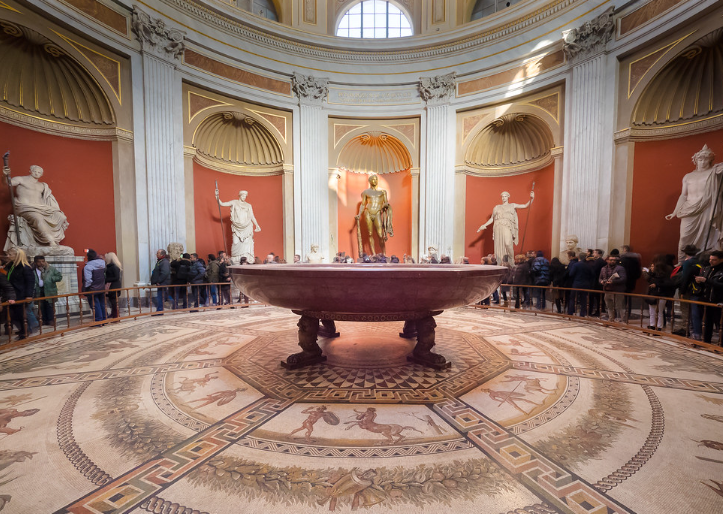Imagine sitting down for dinner, and as you’re served wine and roasted delicacies, the entire room begins to rotate slowly, almost imperceptibly. Above you, the ceiling sparkles like the night sky, and around you, perfumes are sprayed through the air. This wasn’t a scene from a science fiction novel it happened nearly 2,000 years ago inside Emperor Nero’s palace: the Domus Aurea.
Let’s take a deeper look into one of the most astonishing displays of wealth and innovation in ancient Roman history.
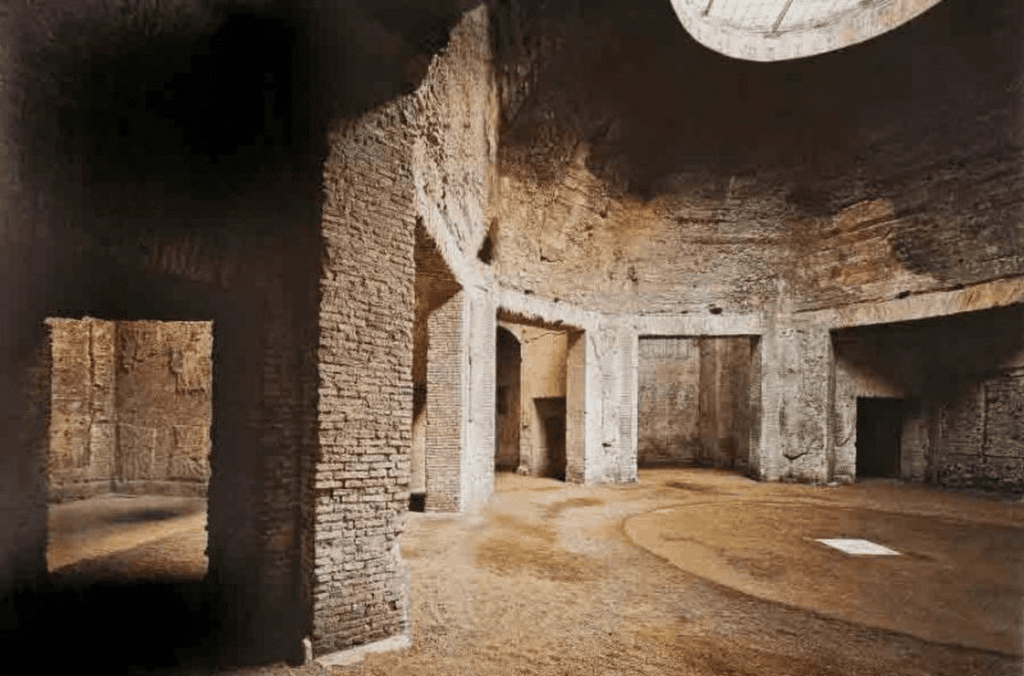
A Palace Like No Other
After the Great Fire of Rome in 64 AD, Emperor Nero took the opportunity to rebuild large parts of the city but not for the public good. Instead, he used the cleared land to construct his sprawling new residence: the Domus Aurea, or “Golden House.”
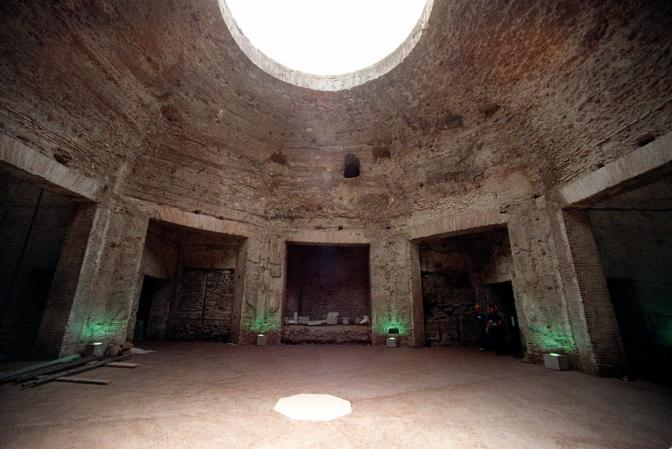
It wasn’t just a palace. It was a statement. Gold leaf lined the walls. Precious stones decorated ceilings. Frescoes covered every surface. But the crown jewel of this architectural marvel was its rotating dining room a space designed to dazzle and overwhelm guests with motion, luxury, and spectacle.
Video:
Archaeologists discover Emperor Nero’s rotating dining room
How Did It Work?
At the heart of the Domus Aurea was a massive circular dining room believed to be mounted on a rotating platform. According to the ancient Roman historian Suetonius, this room was powered by a system of water wheels installed beneath the floor. These hydraulics advanced even by today’s standards slowly turned the entire dining chamber.
The idea was not just novelty. The rotation mimicked the movement of the heavens, suggesting that Nero, seated at the center of the turning world, was a divine figure like the sun god Apollo around whom everything revolved.
In a city where fountains ran with wine and marble was used more than brick, even this dining room managed to stand out. It was a mechanical and artistic triumph that blended Roman engineering with theatrical excess.
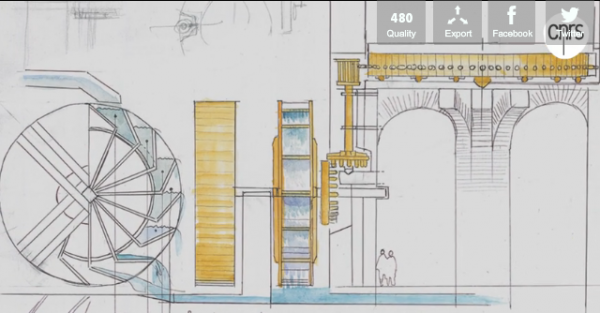
Imperial Luxury or Megalomania?
Nero’s critics saw the rotating room as yet another example of the emperor’s unhinged ambition. To them, this wasn’t engineering genius it was imperial madness.
But whether you see it as innovation or indulgence, there’s no denying the complexity of the project. The Romans were master builders they built roads, aqueducts, and concrete structures that still stand today. But a motorized dining experience in the first century AD? That took a special kind of imagination and power.
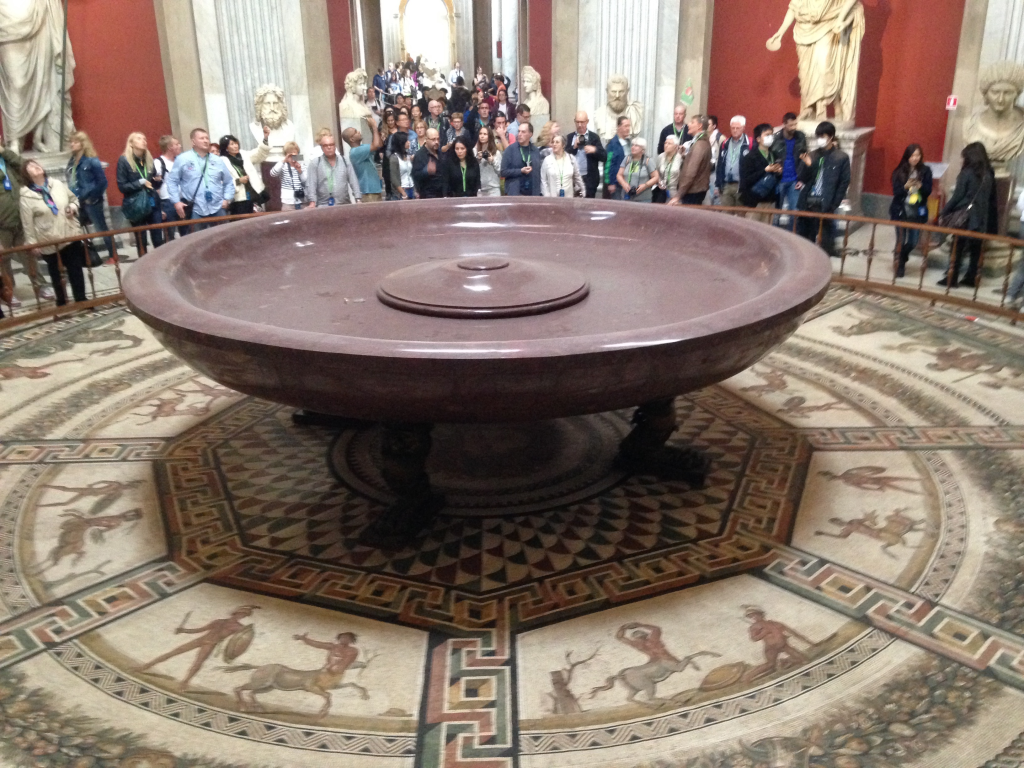
What Remains Today
Much of the Domus Aurea was dismantled or buried after Nero’s death. Later emperors, embarrassed by his legacy, filled in parts of the palace and built over it, turning public opinion against the man who once called himself a god.
Video:
Domus Aurea: The Illustrious Palace of Emperor Nero I SLICE HISTORY
But in the 15th century, artists stumbled upon the buried frescoes beneath Rome. Renaissance painters like Raphael descended into the ruins for inspiration. Today, archaeologists have uncovered parts of the palace, including hints of the famed rotating room. While the machinery itself hasn’t survived, the design and construction techniques continue to fascinate engineers and historians alike.
Visitors to modern Rome can now explore sections of the Domus Aurea on guided tours. Though faded, the opulence still whispers through the walls.
A Glimpse into a Lost World
The rotating dining room of Nero was more than just a party trick. It was a physical symbol of Roman ambition their flair for spectacle, their drive for technological progress, and their taste for decadence.
In today’s world, where rotating restaurants and moving stages are taken for granted, it’s easy to overlook how daring this idea was in ancient times. Powered by water, engineered by genius, and designed to flatter a god-emperor’s ego, this dining room was and remains one of history’s most jaw-dropping architectural feats.
Nero may be long gone, but his spinning banquet of power still captures imaginations across the globe.
